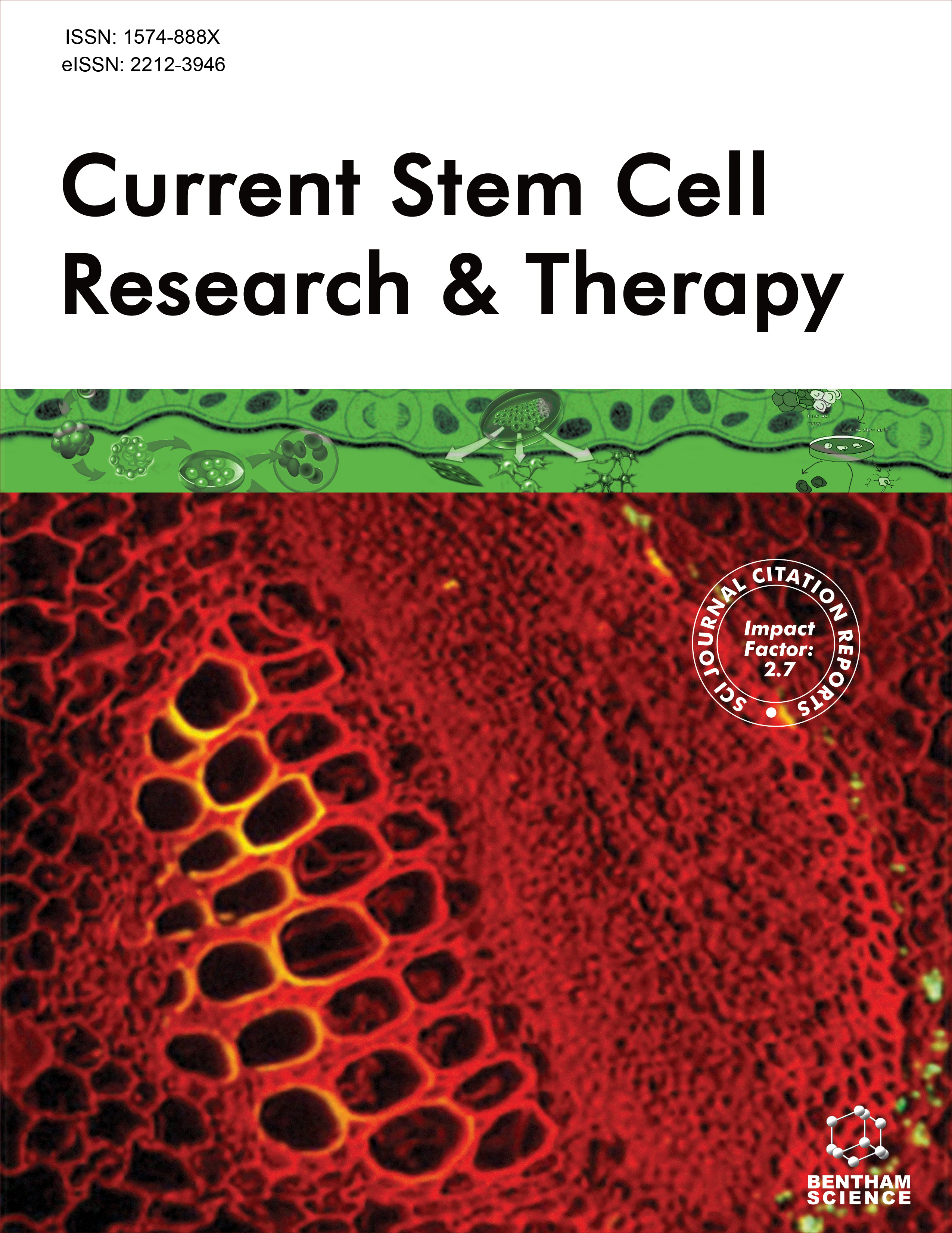- Home
- A-Z Publications
- Current Stem Cell Research & Therapy
- Previous Issues
- Volume 8, Issue 6, 2013
Current Stem Cell Research & Therapy - Volume 8, Issue 6, 2013
Volume 8, Issue 6, 2013
-
-
Potential of Adipose Derived Stem Cells in Orthopaedic Surgery
More LessTissue engineering and cell therapies are currently being leveraged to find improved treatment strategies in orthopaedics. Adipose stem cells have been considered for their potential to differentiate into different cell lineages. The potential of adipose stem cells to restore chondral, bone and tendon tissue has been demonstrated in vivo and in vitro studies. Recently their capacity to restore cells and extracellular matrix of the i Read More
-
-
-
Stem Cell Therapy for Knee Ligament, Articular Cartilage and Meniscal Injuries.
More LessAuthors: Edward Ong, Mukai Chimutengwende-Gordon and Wasim KhanKnee injuries involving ligament, articular cartilage and meniscus are common. The capacity for regeneration and repair of these tissues is limited due to their poor vascularity. Autologous or allogeneic stem cell transplantation has the potential to stimulate healing of these tissues. A number of preclinical studies of stem cell therapy for repair of these injuries have produced promising results. Further clinical trials are needed to t Read More
-
-
-
Synthetic Grafts for Anterior Cruciate Ligament Reconstruction
More LessSeveral artificial biomaterials are available as ligament grafts. No ideal prosthesis mimicking natural human tissue have been found to date. The emerging field of tissue engineering holds the promise to use artificial ligaments as a viable alternative to the patellar or hamstring tendon autografts. Preliminary studies support the idea that these biomaterials have the ability to provide an alternative for autogenous grafts. Read More
-
-
-
A Review of Preclinical and Clinical Studies Using Synthetic Materials for Meniscus Replacement.
More LessThe emerging field of tissue engineering holds the promise to use bio-materials for meniscus injury repair, namely scaffold or meniscus implant. Many implants have been studied and several studies have been conducted to verify the safety and quality of scaffolds. Preliminary data support the idea that synthetic implants can provide an alternative to menyscectomy helping to preserve the cartilage and preventing arthritis in Read More
-
-
-
The Potential of Stem Cell Therapy for Osteoarthritis and Rheumatoid Arthritis.
More LessAuthors: Naveen Keerthi, Mukai Chimutengwende-Gordon, Anita Sanghani and Wasim KhanJoint diseases are a major cause of disability and are a significant financial burden on health care systems. Regenerative medicine offers exciting possibilities for treating osteoarthritis and rheumatoid arthritis. As well as possessing the ability to differentiate into other tissue lineages, some stem cells such as mesenchymal stem cells possess immmunomodulatory properties that make them useful in the search for alternativ Read More
-
-
-
Applications of Stem Cell Therapy for Physeal Injuries.
More LessAuthors: Anita Sanghani, Mukai Chimutengwende-Gordon, Adetola Adesida and Wasim KhanPhyseal injuries may lead to the formation of a bone bridge resulting in limb length discrepancies and angular deformity in children. Current treatment of physeal injuries may be challenging. A number of strategies have been used to repair physeal defects with varying results. Biological regeneration using stem cells is therefore an attractive potential future option to repair physeal defects. Preclinical animal studies using Read More
-
-
-
The Use of Stem Cells for the Treatment of Spinal Surgical Conditions.
More LessAuthors: Syed Aftab, Mukai Chimutengwende-Gordon, Atif Malik and Robert LeeSpinal pathologies are a major burden on society and individuals. Recent years have seen a large number of studies dedicated to the use of stem cells in spinal surgery. This review focuses on recent advances and controversies regarding the applications of stem cells in spinal fusion surgery, spinal cord injury and intervertebral disc degeneration. There are significant concerns regarding the ethics and risks of stem cell use. An Read More
-
-
-
Biological Strategies to Enhance Rotator Cuff Healing.
More LessRotator cuff tear causes a high rate of morbidity. After surgical repair, the presence of a scar tissue reduces tendon biomechanical properties. Emerging strategies for enhancing tendon healing are growth factors, cytokines, gene therapy and tissue engineering. However their efficacy has to be proved. Growth factors help the process of tendon healing by aiding cells chemotaxis, differentiation and proliferation. Numerous Read More
-
-
-
Extrinsic Factors Promoting Insulin Producing Cell-Differentiation and Insulin Expression Enhancement-Hope for Diabetics.
More LessBy Shruti DaveDiabetes mellitus (DM) is considered to be an autoimmune disorder leading to destruction of beta-cells resulting in to a loss of blood sugar control. Attempts using many pharmacological compositions including exogenous insulin have failed to show tight control of glycemia and associated manifestations. Stem cells are considered a potential tool for the supply of insulin-producing cells (IPC) generation in vitro. Stem cell diff Read More
-
Volumes & issues
-
Volume 20 (2025)
-
Volume 19 (2024)
-
Volume 18 (2023)
-
Volume 17 (2022)
-
Volume 16 (2021)
-
Volume 15 (2020)
-
Volume 14 (2019)
-
Volume 13 (2018)
-
Volume 12 (2017)
-
Volume 11 (2016)
-
Volume 10 (2015)
-
Volume 9 (2014)
-
Volume 8 (2013)
-
Volume 7 (2012)
-
Volume 6 (2011)
-
Volume 5 (2010)
-
Volume 4 (2009)
-
Volume 3 (2008)
-
Volume 2 (2007)
-
Volume 1 (2006)
Most Read This Month
Article
content/journals/cscr
Journal
10
5
false
en


